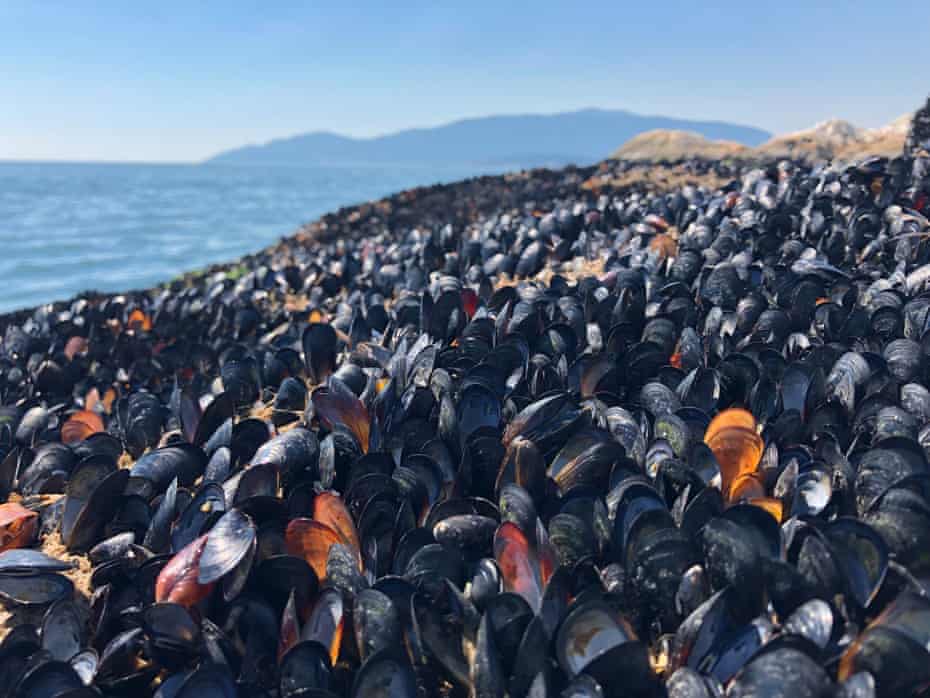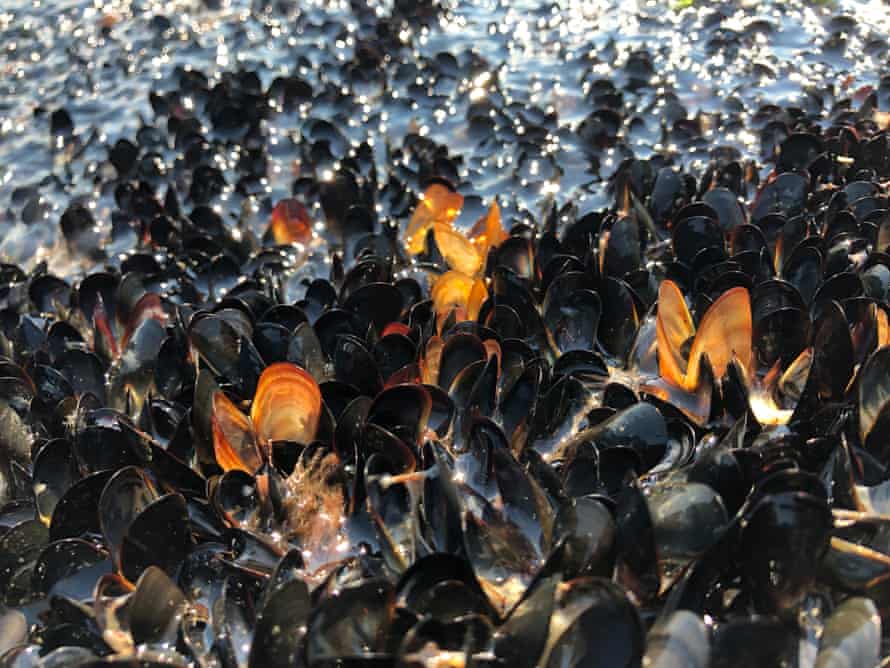‘Heat dome’ probably killed 1bn marine animals on Canada coast, experts say

British Columbia scientist says heat essentially cooked mussels: ‘The shore doesn’t usually crunch when you walk’
Last modified on Thu 8 Jul 2021 12.48 EDT
More than 1 billion marine animals along Canada’s Pacific coast are likely to have died from last week’s record heatwave, experts warn, highlighting the vulnerability of ecosystems unaccustomed to extreme temperatures.
The “heat dome” that settled over western Canada and the north-western US for five days pushed temperatures in communities along the coast to 40C (104F) – shattering longstanding records and offering little respite for days.
The intense and unrelenting heat is believed to have killed as many as 500 people in the province of British Columbia and contributed to the hundreds of wildfires currently burning across the province.
But experts fear it also had a devastating impact on marine life.
Christopher Harley, a marine biologist at the University of British Columbia, has calculated that more than a billion marine animals may have been killed by the unusual heat.
A walk along a Vancouver-area beach highlighted the magnitude of devastation brought on by the heatwave, he said.
“The shore doesn’t usually crunch when you walk on it. But there were so many empty mussel shells lying everywhere that you just couldn’t avoid stepping on dead animals while walking around,” he said.
Harley was struck by the smell of rotting mussels, many of which were in effect cooked by the abnormally warm water. Snails, sea stars and clams were decaying in the shallow water. “It was an overpowering, visceral experience,” he said.
While the air around Vancouver hovered around the high 30s (about 100F), Harley and a student used infrared cameras to record temperatures above 50C (122F) along the rocky shore.
“It was so hot when I was out with a student that we collected data for a little bit and then retreated to the shade and ate frozen grapes,” said Harley. “But of course, the mussels, sea stars and clams don’t have that option.”

Mussels are hardy shellfish, tolerating temperatures into the high 30s. Barnacles are even sturdier, surviving the mid-40s (about 113F) for at least a few hours.
“But when the temperatures get above that, those are just unsurvivable conditions,” he said.
The mass death of shellfish would temporarily affect water quality because mussels and clams help filter the sea, Harley said, keeping it clear enough that sunlight reaches the eelgrass beds while also creating habitats for other species.
“A square meter of mussel bed could be home to several dozen or even one hundred species,” he said. The tightly bunched way mussels live also informed Harley’s calculation of the scope of the loss.
“You can fit thousands on to an area the size of a stove top. And there are hundreds of kilometres of rocky beach that are hospitable to mussels. Each time you scale up, the numbers just keep getting bigger and bigger. And that’s just mussels. A lot of sea life would have died.”
While mussels can regenerate over a period of two years, a number of starfish and clams live for decades, and they reproduce more slowly, so their recovery is probably going to take longer.
Harley has also received reports from colleagues of dead sea anemones, rock fish and oysters.
Experts have cautioned that the province needs to adapt to the reality that sudden and sustained heatwaves are likely to become more common as a result of climate change.
Another heatwave is expected to strike the western United States and south-western Canada in the coming week, highlighting the relentlessness of the dry summer heat.
“The nerdy ecologist part of me is excited to see what will happen in the coming years,” said Harley. “But most of the rest of me is kind of depressed by it. A lot of species are not going to be able to keep up with the pace of change. Ecosystems are going to change in ways that are really difficult to predict. We don’t know where the tipping points are.”
